

Does the Internet have a gender? Facebook Interest Lists Turn Your Feed Into a Personalized Newspaper. Why Twitter Is Massively Undervalued Compared To Facebook. Editor’s note: In this guest post, Naval Ravikant and Adam Rifkin argue why Twitter is undervalued.
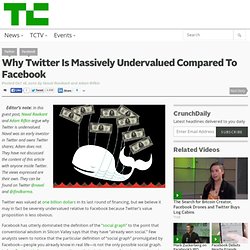
Naval was an early investor in Twitter and owns Twitter shares; Adam does not. They have not discussed the content of this article with anyone inside Twitter. The views expressed are their own. They can be found on Twitter @naval and @ifindkarma. Twitter was valued at one billion dollars in its last round of financing, but we believe it may in fact be severely undervalued relative to Facebook because Twitter’s value proposition is less obvious. Facebook has utterly dominated the definition of the “social graph” to the point that conventional wisdom in Silicon Valley says that they have “already won social.” 5 Key Components of a Successful Interest Graph. Moataz Rashad is an entrepreneur and advisor to a few startups.
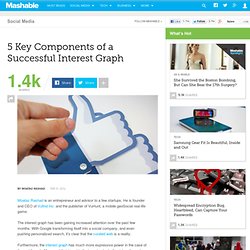
He is founder and CEO of Vufind Inc. and the publisher of VuHunt, a mobile geoSocial real-life game. The interest graph has been gaining increased attention over the past few months. With Google transforming itself into a social company, and even pushing personalized search, it's clear that the curated web is a reality. Furthermore, the interest graph has much more expressive power in the case of the mobile web. Many mobile interest indicators simply don't exist on the web, for example, checkins, location data, near field communication, etc. Let's take a close look at what’s involved when building a complete and expressive interest graph platform, and how the resulting graph can effectively optimize ad/reward targeting.
Companies developing interest graph platforms have to overcome the following fundamental challenges. 1. There are two approaches to collecting interest data: explicit and implicit. 2. 3. People Forage for Memories in the Same Way Birds Forage for Berries. Humans move between ‘patches’ in their memory using the same strategy as bees flitting between flowers for pollen or birds searching among bushes for berries.
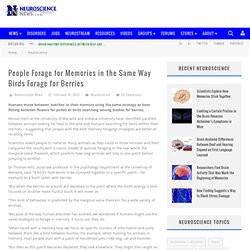
Researchers at the University of Warwick and Indiana University have identified parallels between animals looking for food in the wild and humans searching for items within their memory – suggesting that people with the best ‘memory foraging’ strategies are better at recalling items. Scientists asked people to name as many animals as they could in three minutes and then compared the results with a classic model of optimal foraging in the real world, the marginal value theorem, which predicts how long animals will stay in one patch before jumping to another. Dr Thomas Hills, associate professor in the psychology department at the University of Warwick, said: “A bird’s food tends to be clumped together in a specific patch – for example on a bush laden with berries. “But then as this patch becomes depleted, they look elsewhere. The Interest Graph and The Social Graph social and interest graph â Eccho. The Future of the Social Web: Social Graphs Vs. Interest Graphs. Social networks seemed poised to take over the Web.
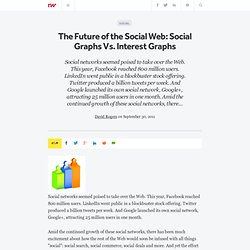
This year, Facebook reached 800 million users. LinkedIn went public in a blockbuster stock offering. Twitter produced a billion tweets per week. And Google launched its own social network, Google+, attracting 25 million users in one month. Amid the continued growth of these social networks, there has been much excitement about how the rest of the Web would soon be infused with all things "social": social search, social commerce, social deals and more. (5) If one could scrape millions of public Facebook or Google profiles what are some interesting analyses to run on the data.
What the heck is an interest graph? Pearltrees raises $6.6M to show us. Social curation startup Pearltrees has just sealed a deal for €5 million (around $6.6 million), all in the name of creating a better interest graph.
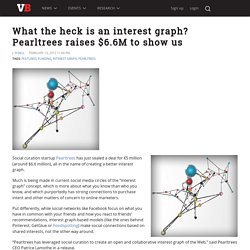
Much is being made in current social media circles of the “interest graph” concept, which is more about what you know than who you know, and which purportedly has strong connections to purchase intent and other matters of concern to online marketers. Put differently, while social networks like Facebook focus on what you have in common with your friends and how you react to friends’ recommendations, interest graph-based models (like the ones behind Pinterest, GetGlue or Foodspotting) make social connections based on shared interests, not the other way around. “Pearltrees has leveraged social curation to create an open and collaborative interest graph of the Web,” said Pearltrees CEO Patrice Lamothe in a release. “As a consequence, Pearltrees harnesses the power of people to organize and discover the most valuable content on the web”, he said.